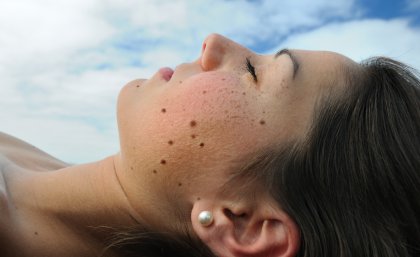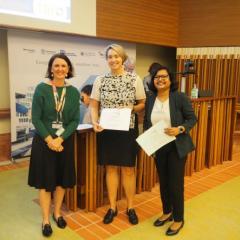 Testing for two gene mutations commonly associated with melanoma would be insufficient to determine whether a mole could turn cancerous, University of Queensland research has found.
Testing for two gene mutations commonly associated with melanoma would be insufficient to determine whether a mole could turn cancerous, University of Queensland research has found.
UQ Diamantina Institute’s Dr Mitchell Stark is among researchers investigating why melanomas develop from some naevi (moles).
“In Australia, about half of all melanomas develop from a naevus, but most moles will never progress to become a melanoma,” Dr Stark said.
“We are trying to determine what causes some naevi to change so that we can better predict or more accurately detect those which could become dangerous.
“This would help avoid unnecessary excisions of those lesions unlikely to pose a risk.”
Scientists from UQ’s Dermatology Research Centre analysed samples from participants in the Brisbane Naevus Morphology Study, and discovered all had one of two key mutations associated with melanoma.
“We found that 85 per cent of samples had a mutation on the gene known as BRAF, and the remaining samples had a mutation on the NRAS gene,” Dr Stark said.
“When either of these genes are mutated it activates the signalling pathway known as MAPK, which is commonly active in melanomas.
“Clearly our samples were not melanomas, so additional genomic events need to occur before a mole becomes malignant.”
Dr Stark said further research was underway to determine other genetic changes that could trigger the development of melanoma from naevi.
Studies have consistently shown the number of naevi a person has is the strongest predictor of risk for melanoma.
Dr Stark said people with a high number of moles, and other risk characteristics such as fair skin or light coloured hair or eyes, should continue to see their treating dermatologist or skin cancer physician for routine skin examination.
Dr Stark is a National Health and Medical Research Council (NHMRC) Early Career Fellow.
The UQ Dermatology Research Centre is a participant in the Centre of Research Excellence for the Study of Naevi, and is based at the Translational Research Institute.
The research was published in the British Journal of Dermatology .
Media: Dr Mitchell Stark, m.stark@uq.edu.au, Kim Lyell, k.lyell@uq.edu.au, 0427 530 647.



